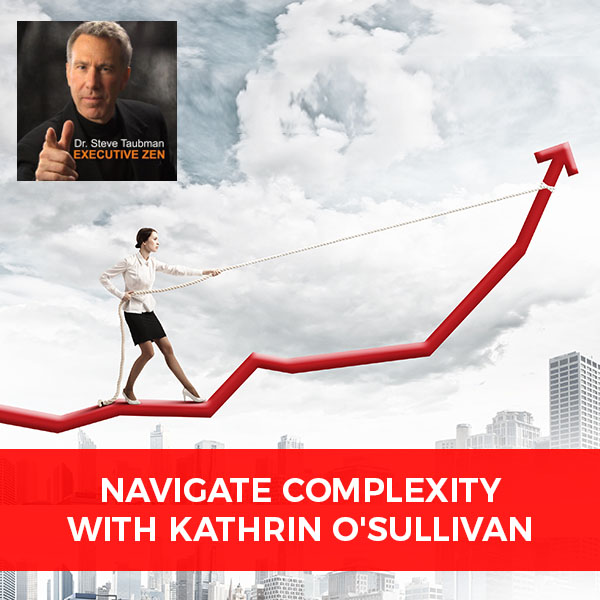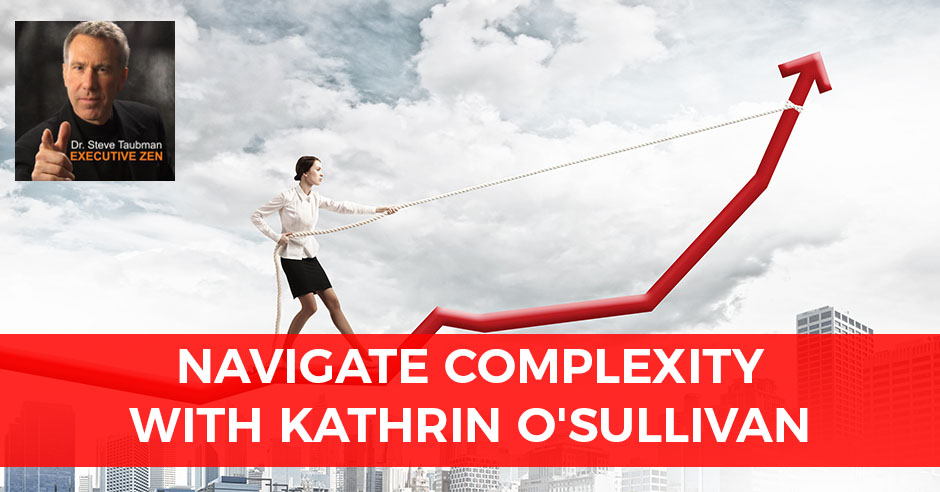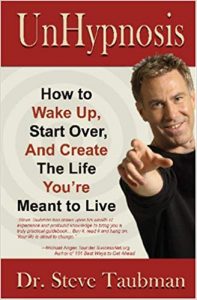

In this episode, I’m joined by Kathrin O’Sullivan, an experienced and respected organizational development consultant, facilitator, executive coach, and speaker with 20 years of experience in the tech industry, working internationally.
She left Google in 2017 after 12 successful years building a multi-million dollar advertising revenue channel in Europe, moved to the US and held several leadership positions in People Operations, most recently Head of Executive Development.
Kathrin understands the demands on execs in a world where traditional structures are breaking open. Her recipe for success is a unique combination of business knowledge cross-cultural intelligence, sharp focus, mindfulness, and powerful intuition. This will be EPIC! 🙂
—
Listen to the podcast here:
Navigate Complexity with Kathrin O’Sullivan
Our topic is navigating complexity. Our guest is Kathrin O’Sullivan. She’s someone who brings great insight and experience to this discussion. The context of this conversation is complexity has a very specific meaning and I will leave Kathrin to sort that out with you and with me, to help me clarify it. It comes from a model or from a map of the various ways in which leaders interact with their worlds, whether what they’re dealing with is complex or chaotic, complicated, simple.
I’d like to offer you the underlying qualities that leaders do possess or don’t possess that make navigating that space more or less difficult. I don’t claim any expertise in this area, but I have faced a bit of complexity myself in my life. These are the things that I have noticed have helped me make sense of those complex experiences. Maybe you’ll find that these resonates for you. I’ll share these with you and give them to you as food for thought. When our guest joins us, then she can take the liberty of setting me and you straight on maybe a more nuanced way of looking at this, but in my clunky way, here’s my thinking about this.
There are certain qualities that make us more or less capable of dealing with complexity. I’m not making the same distinction as she will. I’m thinking in terms of complexity, including just having a lot to do with being disorganized, being in a chaotic state or not knowing what the proper course of action is. Particularly as C-suite leaders, you’ve got a lot on your plate. For many of us, those things that don’t come automatically, easily and effortlessly require a certain mental effort and some people are better at it than others. Here are the qualities that are maybe more valuable, at least have been for me. The first one is comfort with uncertainty. There are people that I know who are absolutely devastated by the idea of not knowing what’s next.
We’re raised to believe that we need answers and that we need to know the last page of the book. Click To TweetThey can’t handle the idea that their world is not completely predictable and that’s most of us. We’re raised to believe that we need answers and that we need to know what’s on the last page of that mystery novels, so much so that a lot of us turn to the last page. We don’t like uncertainty. We don’t like loose ends and it’s part of the human condition that we have a tendency to create patterns. If we create patterns, then they make us feel safe. As the cavemen and women of old who had to navigate their world. It was very unsafe if they didn’t know exactly how the saber tooth tiger behaved and where they needed to go if something happened and what certain things meant. We like to create patterns and sometimes we’re creating patterns that make us safe. Sometimes we create patterns that create less creativity for us, less possibility for us.
In our modern world, the ability to become comfortable with uncertainty is an important quality. The second one is the willingness to experiment. There have been times when I had about a thousand different things that I might potentially do that might lead me in a particular direction. Even the direction wasn’t necessarily certain. Maybe I knew that I wanted to get on TV or I knew that I wanted to build a new series of workshops. Maybe I knew that I had a book idea inside of me. What I would need to do is experiment with which steps I might take that would lead me toward those goals and be willing to abandon ship if any of those steps wasn’t the one that got me where I wanted to go.

UnHypnosis: How to Wake Up, Start Over, and Create the Life You’re Meant to Live
I’m talking about missteps and the willingness to experiment with our missteps. I wrote a book called UnHypnosis, which is about living a happy life. I joke with my audiences by saying I wrote a book about living a happy life and it made me miserable. In the process of experimenting, I found out all the things that didn’t support me in promoting marketing and discussing the book itself. The next one is emotional intelligence. We’ve got a wide variety of levels of emotional intelligence among us. We’re led to believe that intelligence in the conventional sense that IQ is a predictor of success, when in fact. what we find is that IQ is a much less valuable predictor of success than emotional intelligence, The ability to understand and manage your own emotions. Those people who could do that more effectively are those who are better at dealing with complexity. Critical thinking, taking the data that’s all around you and putting it together in a cohesive way and making intelligent decisions about what to do with those pieces of data and when to do it.
Lastly, a good sense of humor. I don’t think that I could have gotten as far as I’ve gone if I couldn’t laugh at some of my missteps. Certainly, there have been times in my life where I wasn’t laughing. I tell my audiences, “Think about those times in your life where you were in crisis, where you were in complexity, where you were in chaos. Think about how many times in your life you’ve said these words, “Someday we’re going to look back at this and laugh.” My response to that is, “Why wait?” Let’s laugh now. Let’s see if we could maintain that sense of humor even during times of complexity.
By being comfortable with uncertainty, by being willing to experiment, by demonstrating emotional intelligence, by demonstrating critical thinking and applying that sense of humor to the best of our ability. In that way, we can move through all of those missteps until we get to a place where that which was complex might become predictable. All of these qualities that I’ve defined require something called mindfulness. Mindfulness is a quality of mind that is not necessarily taught to most of us here in the Western world, but it’s a quality that this show is all about, Zen and the art of thriving under pressure.
What would it be like if you were more self-aware, if you were more-self-controlled, if you could accept the inner experiences you’re having and the outer experiences without judgment and without reaction? That’s mindfulness and it’s something we train ourselves to do. It’s not something that we are born with, nor is it something that we can learn in a book. It’s a quality that comes from training. That’s one of the things I want to talk to Kathrin about. My discovery of Kathrin came from the world of mindfulness.
—
I am thrilled to be introducing my guest, Kathrin O’Sullivan. She’s an experienced organizational development consultant, facilitator, executive coach, and speaker with twenty years of experience at high tech industry. She has held top international leadership positions with Google, with Oracle, and others. She studied with some of the most distinguished thought leaders in her field and she has a philosophy that is compatible here with Executive Zen. We’re all about leading consciously and profiting responsibility. She believes that in service of creating a world where everyone can thrive, we need smart leaders who are curious, grounded, open, and passionate about what they do in times where command and control approaches do more harm than good.
Effective leadership requires presence, deep listening, truth-telling and compassionate wise action. I’m so excited about that notion. Despite being always on pressure with their daily reality, the most powerful and effective leaders cultivate time for silence and introspection in order to sharpen their intellect and access their intuition. It allows authentic and effective leadership that inspires everyone to give their best even in times of uncertainty and constant change. I became aware of Kathrin when I was exploring the relationship with the Mindful Leadership Summit. In the process of learning about the event, I became aware of Kathrin. I was, needless to say, very impressed. Kathrin, welcome.
Thank you. It’s great to be here.
It’s a pleasure to have you. Did you hear my wrap on mindfulness and complexity? Did I make any sense to you?
You made a lot of sense to me. Thank you for sharing your thoughts. Even though you position me very much as an expert, I see myself a lot more like a learner and less than an expert. That’s one of the key ingredients in complexity, which you call the willingness to experiment. It’s experimenting in service of learning. That’s a key ingredient to thriving in complexity.
It’s interesting that there are experts in many fields, but it’s pretty hard to be an expert in the conventional sense of what expertise means when the thing you’re expert at is something that’s changing all the time.
One of the key qualities to leading well in complexity is taking perspectives. Click To TweetBeing too married to your own expertise can be a hindrance in complexity. The reason why I say that is because one of the key qualities when it comes to leading well in complexity is taking multiple perspectives. If I hold onto my own expertise too tightly, it’s probably hard to look at other perspectives or take those into consideration. If I think I have all the answers, I’ll miss some critical pieces.
This is an area where lots of different inputs and lots of different ideas are of value.
Maybe it’s helpful to make a distinction between complex and complicated. This was based on the work of Dave Snowden, who is using a model called the Cynefin model. Dave Snowden divides the world into what’s predictable and what’s unpredictable. When we talk about complicated, we talk about what’s predictable. While it may be difficult to find an answer in the complicated realm, it’s possible to predict and find the answer, even if it takes expertise or some time or hard work or study. This is what we learned in business school. This is what we do in corporate often. As leaders, we see our job as finding the answer, solving the problem, and fixing the issue. In the complicated world, that’s exactly what we need to do. We need to close the gap between what we don’t know yet and what we want to solve. In the complex world, it’s a little different because here, we’re dealing with the unpredictable. The relationship between cause and effect in the complex world can’t be known until after the fact.
For example, if I drive my car and all of a sudden, traffic slows down. It comes to a standstill in a place where usually there are no traffic jams. I don’t know what the cause of the traffic jam is. I can only know once I get to the place where I know there’s an accident or there are roadworks. In the complex world, we need to be with the uncertainty of not knowing and not being able to predict. As you said, discomfort with uncertainty is hard. It’s part of the human condition to needing to be safe and wanting to be safe and therefore, wanting to control, wanting to predict. In the complex world, that’s not possible because we can’t know the outcome. The outcome is unknowable in the unpredictable world.

Navigate Complexity: In the complex world, the outcome is unknowable.
I read that myself about the Cynefin map and about Dave Snowden’s work. I’m still looking for maybe more clarity about what are some examples of something that might be considered complex rather than complicated.
I’m taking an example from my own industry. I’m working in the tech industry mainly and building a piece of software is a complicated thing to do. It requires experts. It requires people who know how to code, but typically they know what they want to create, and they create it. That’s what’s complicated. Open heart surgery, not everybody can do that. You have to be a well-trained surgeon to be able to do that. If you have the expertise, you follow your process. There may be some debates about which process exactly to follow, but you know what you have to do, and you get to an outcome. Whereas in the complex world, if you use that piece of building software, implementing software is a whole different story.
Do people want to use the software that I’ve built? Do they want to buy it? Is it going to be successful? Is it’s going to integrate with the software systems that people already have? These are all unpredictable questions and that’s what makes it complex. The way I look at it is, as soon as there are human beings involved, pretty quickly, it turns into the complex realm because as human beings, we are an inherently complex system. There is so much going on inside of us and around us. That’s where mindfulness comes in.
Even as I’m sitting here talking to you, there’s a part of me that’s enjoying this conversation. It’s easy to talk to you. I do feel like I know what I’m talking about. There’s a part of me that’s excited. There’s a part of me that feels comfortable. There’s also a part of me that’s thinking like, “How many people are reading this? What are they thinking of me? Am I even making sense? What will the others say who have a lot more expertise in complexity than I do?” That’s already two parts of me that are here at the same time. If I spend more time unpacking my own system, there are probably twenty parts of me that are at play here, including my body, including the area around me, etc.
By tapping into your creative power, you’ll be co-creating something useful with the world. Click To TweetAt any given time, as a human being, I have a choice which part of me I choose to give air time, or I choose to engage in. As a leader, especially in high-pressure situations, a mindfulness practice can help me ground and engage with the part that I’m more conducive to success than the parts that are probably going to hold me back. One way to look at this is am I tapping into my creative power or am I tapping into my reactive power? Which means as I’m tapping into my creative power, I’ll probably be co-creating something useful with the world around me. If I’m being too reactive, I’m probably shutting down and defending.
I love the idea of the parts of you. We’ve been talking that language for a long time through psychosynthesis and other things. This idea that there’s a part of me that’s happy to be here. There’s a part of me that’s got an itchy foot. There’s part of me that thinks that this is nonsense. All those parts are playing. Part of mindfulness is having the choice about which part gets airtime, which part you’re going to engage and allow. The idea of choosing to be creative versus reactive is powerful. The one thing I would add to that is the more mindful you are, the more aware of all the parts that you are. It’s not as easy to choose the most effective part of you when there are a lot of parts that are acting on you that you’re not even aware of.
There’s a lot of energy that gets eaten up by protecting or hiding the parts of ourselves that we don’t want to see or that we don’t want to show. Oftentimes, that happens unconsciously. It does require a lot of capacity. Mindfulness can help us identify those parts and then also become more compassionate towards those parts. It then helps those parts relax, which in turn helps free up our capacity for our creative power.
I first did my initial mindfulness training through meditation retreat process. Mindfulness was defined as awareness plus equanimity. It’s being aware of what’s going on, aware of all the parts, both the parts that are inside of you and all the other parts of the complex system that you’re navigating. Also, equanimity, meaning a neutral nonjudgmental stance, what you call compassionate stance toward those other things. It’s not enough to just be aware that you’ve got these parts. If you’re hating them, if you’re rejecting them, then there’s a lot of mental energy that you’re using up.
If you look out the word compassion, the root of the word is Latin and means “with suffering.” Being with suffering is a hard thing to do. It requires a capacity to be with, let’s call it the icky stuff. That’s what’s so amazing about it is as you develop that capacity to be with suffering, suffering already starts to lessen, which is interesting and mind-blowing to me. The minute I start not running away from it, but engaging with it, something happens that is miraculous and super helpful.
When I talked to people who have done the work, who aren’t just talking about mindfulness as an intellectual exercise, but people who have done what it takes to become mindful, they talk like you talk. It’s clear to me that you know what you’re talking about because there’s like the idea of getting with the icky parts and just being able to sit through them and to make peace with them rather than running from them. What comes down on the other side of that is a sense of humor, which you definitely have and a sense of clarity that a lot of people don’t have. Just the fact that you started this conversation by saying, “While I’m sitting here, I noticed there are different parts of myself.” Most people don’t notice that.
Mindfulness is trainable. We can definitely all learn to, if we bring it back to the language of complexity, to see systems. Another critical piece in complexity is seeing systems. It means that you widen your lens and pay attention to what’s happening at the moment. What’s happening to myself? What are the different parts of myself? What’s happening around me? Who are the people that I’m interacting with? How do my parts trigger their parts and vice versa? What’s the task that needs to get done? Are we maybe zooming in on one particular task too much and forget to look at all the forces that are at play? It’s interesting like every meeting I go to in business starts with either what are we solving for or how do we fix it?

Navigate Complexity: Mindfulness is trainable and we can all learn how to do it.
To me, there’s a danger that if we start a meeting so narrow, how do we fix it? That we go down a rabbit hole that in complexity is not useful. What we need to do is understand what are the forces at play here? How do they influence one another? How am I contributing to this mess? How is my team contributing to it, etc.? Looking at the whole and looking at what connects me, as a mindfulness practitioner, I have a very clear self-sense that we’re all connected, but we don’t need to necessarily use that language in business. For some people that might be off-putting, but we can talk about the different components of the system and the relationship between them. That’s helpful for leaders to understand the connections. That brings that challenge to life or that brings their vision to life, etc.
Two things are coming up for me as you say all of this. One is then how do you have a meeting that promotes that widened thinking? Number two, how do you deal with people who are very attached to their tunnel vision way of looking at things.
I’m going to start with two. When I first started my own mindfulness practice, such a big world open for myself. I started judging people who had tunnel vision. I was like, “How do they not get it? How do they not see it? How do they sit for ten minutes every day?” I was worked up and I’m right and they’re wrong. Sometimes when I hear people talk about mindfulness in business, I hear some underlying judgment that people aren’t quite evolved enough or are not there yet. I want to bring it back to compassion. How can I be compassionate to everyone regardless of their point of view? Secondly, how can I be compassionate towards myself and my triggers. Oftentimes, I get triggered if I feel like we’re doing the wrong thing here. This should be in service of the greater good and it’s not in service of the greater good. Things like that trigger me but who am I to say that I know what the greater good is?
What you’re describing is humility and bringing humility to a situation where you might initially feel like, “I know that this person is tunnel vision.” My first question was, how do you deal with the people who are stuck in that very narrow problem-solving mentality?
One way to do that is to ask questions to open it up to try to understand where people are coming from. What is at stake for them? What is at stake for somebody who has a very fixed idea? Trying to invite them into a conversation and balancing advocacy and inquiry, meaning being clear about my point of view, but also being curious about other people’s point of view. Curiosity and openness are important. We also need to become better at teaching tools for complexity. It starts in business school with management training, whatever tools available.
For example, that Cynefin framework is one of those tools. Barry Johnson has a great tool, which is called a Polarity Map. There are different tools that are out there and that help understand that if we’re treating a complex challenge, like a complicated challenge, meaning that we’re trying to solve it with a five-step plan, we’re pushing a rock up a hill. It’s not going to work because complexity is in the unpredictable world. We can’t see the future. We can only engage with the present to create conditions for a different future.
I think about a sports team. What’s most important is that you have certain qualities as a player and as an interacting team, that you can move quickly, are agile, responsive and that you’re not thrown off course mentally and emotionally by what happens. You can’t say, “This is the way this football game is going to go,” and then plan out every play because you couldn’t possibly know what you need to respond to until you start playing the game. What you can do is you can get better at being agile. You can get better at being open-minded. You could get better at being a creative problem solver.
If you can engage with the present without needing to judge or react to it, then you can be agile. Click To TweetMindfulness is so precious and important because if I can engage with the present without needing to judge it or without needing to react to it, I can be more agile because I have more. I have a wider register. I have more access to my own resourcefulness. I also have a better sense of what the situation requires or what the team requires or what the task at hand requires.
Talking to me is like preaching to the choir because I put such value on this and of course, how could anybody think any other way. In the business world sometimes, it’s hard to get people, leaders particularly, to embrace the idea of mindfulness. It sounds like a soft skill or it sounds like you’re asking me to stop keeping my eyes on the prize. Instead you’re asking me to sit down and be quiet. How are those things going to solve anything for me? Do you encounter that at all in business?
Absolutely. There is now so much research and studies about how the mindfulness movement, mindfulness training, or whatever you want to call it. It’s positively impacting business results. On a cognitive level, a lot of leaders are open to exploring more. However, the harsh reality for a leader is that they are nearly always on. They have days with twenty meetings, millions of important decisions to make. Within that pressure cooker, it’s hard to then make the time for mindfulness. In many ways, people probably associate mindfulness with slowing down. At some subconscious level, slowing down is a major red flag in business. It’s all about being ahead of the competition and creating the future, being the first with the newest product to market, etc. That is like a missed connection or a mind trap or whatever you want to call it, where we think, even if we’re just taking two minutes to do some debriefing, those two minutes at the end of the day will make a negative difference.
Those two minutes, that was going to use to come up with the answer to all my problems.
It’s sad because the way I see it is you can quote all the research you want, and people will listen to the research. They will need business cases and that’s all super useful. The most success I’ve had with bringing mindfulness into organizations is working with senior leaders one-on-one and giving them an experience of what it is like to engage in some mindfulness activity. Have them be the spokespeople, have them be the people who lead the change. It’s all about giving people an experience.
It’s a big paradigm shift and by starting with the individual leaders who are open to looking at it. They’re not creating an entire initiative in their company right up front. They’re just seeing like, “This makes a difference.” You could tell them, “This is how the Samurai warriors did it.” They needed to learn how to quiet their minds. They needed to learn how to go inside and become mindful in order to be better warriors. If you think you’re going to be a good warrior without doing the inner work, you’re sorely mistaken.
For example, Google, the company that I used to work for before I started my own business, is seen as one of the corporate pioneers for bringing mindfulness into business. There, for example, it was a complete grassroots effort, meaning there was one employee who felt strongly about the benefits of mindfulness and he managed to bring this to the company. It’s the people who have an experience of how powerful it can be. They are your most powerful allies. If they have power and if they’re at the top, then it’s a lot easier, but it can work either way.
Grassroots are from the top, but it’s usually somebody or a couple of somebodies who recognize the value in order to give people the experience. Once you give somebody the experience, it’s pretty hard to refute the value of it. You’ve seen this happen in Google and you’ve seen it happen in other companies. Maybe you even have some thoughts about how a company might implement some mindfulness practice and how it might then influence their ability to navigate complexity.
This is a whole topic for a whole other conversation. How do you bring mindfulness to corporate? There are two important levers. One is quote the research, make a business case. The other one is find the people who feel passionate about this and see if you can start a movement.
There’s the left brain and the right brain. You’re appealing to the left brain, logical, linear thinkers by saying, “Look, here’s the proof.” Then you have the other people who were experiential and saying, “Look, feel this.”
I feel like we need both the science and compassion. Not to say that they are neutrally exclusive.

Navigate Complexity: We need both the science and compassion.
How has that movement influenced Google or any other companies that you’re aware of?
I know from Google and also from other companies that there are tangible results, especially everything that has to do with what’s called employee engagement. Employee engagement pretty much measures how well-connected employees feel to the company, how their well-being is, how hard they work. Basically, how much skin in the game they have. The higher employee engagement, the more profitable companies usually are. If you have a critical mass of mindfulness practitioners in a company or mindfulness training in a company, definitely there are studies out there that show that employee engagement goes up significantly.
That’s a huge statement. If you have a critical mass of mindfulness practitioners within a company, then various parameters go up, their productivity, engagement, and other measurable metrics.
I don’t have the research in my head and I don’t want to make it up, but you can easily find studies. Let’s say you’re in a position where you feel passionate about mindfulness or where you feel like this could be useful for my company. My advice would be to find the research. It’s easy to find and then find the people around you that are passionate about mindfulness. It could be as easy as booking a meeting room once a week for half an hour and do a guided feat or something like that. It could start like inviting people. Give them an experience, see how they feel about it and see if the whole thing gains traction.
The other thing is How can we integrate what we know about mindfulness and mindfulness training into our day to day? Even in a meeting, even without using the word mindfulness, how can we encourage people to arrive and maybe slow down for a minute before we start our meeting? How can we do a quick check-in where everybody can take a minute to share how they are or whatever it is? How can we create a place where we have more room for silence, reflection, and connection? Even if it’s just like 30 seconds or one-minute thing.
I bet you have answers to a lot of those questions.
We all have those answers. It’s the courage to be the first one to say, “Can we just take a minute?” or when we have a heated argument, “Can we take 30 seconds to calm down so that we can engage from a more creative place?”
Kathrin, do you have any favorite books that talk about mindfulness, particularly about mindfulness as it applies to business or just mindful living kind of books that you like to share with others?
One of my favorite books is Simple Habits for Complex Times by Jennifer Garvey Berger and Keith Johnston. Jennifer and Keith are the co-founders of a company called Cultivating Leadership that I work with and a lot of my thinking is informed by Jennifer and Keith’s research. As you read this book, you will see that maybe the usual mindfulness terms don’t necessarily even appear there, but it’s all about how to engage more mindful with each other.
In our modern world, the ability to become comfortable with uncertainty has become an important quality. Click To TweetIf you go to the website of Cultivating Leadership, you’ll find a lot of shorter video clips around different complexity concepts. If you want to dive deeper there. I also enjoyed one of the more publications called The Mind of the Leader by Rasmus Hougaard and Jacqueline Carter. There’s a lot of research in there around how mindfulness is helping you become a better leader. They’ve interviewed hundreds of leaders who have a mindfulness practice. That’s an interesting book as well.
Thanks for sharing that. We’re coming up on the end of our interview portion and I do want to say, first of all, Kathrin, this is amazing. You’re delightful.
Thank you.
I want to lead my audience to learn more about Kathrin and find out how to bring her to your business or help her empower you as an individual to embrace these mindfulness principles and to use them to navigate complexity. You can visit her website, which is KathrinOSullivan.com. I invite you all to take a look at that.
I always like to end my shows with a metaphor, a quote, and a challenge for the day. My metaphor is a filing cabinet. Sometimes our minds are like we’ve got all different things outside of the cabinet. Sometimes what we need to do is to put those things into their individual files. We also need to be able to open up those files and see if maybe some things in one file belong in another file. During this kind of complexity, it’s worth looking at whether or not your filing cabinet is locked. That is everything is exactly where it’s supposed to be, and we can play with it or if it’s open and you could let things interact while at the same time having some structure to this with systems. My own quote says, “If you don’t like complexity, try chaos.” Every week we offer a challenge for the week. In the last few weeks, we’ve shifted. We’ve pivoted so that the challenge of the week comes from my guests. Without having to put Kathrin on the spot too much, I would like to offer Kathrin the opportunity to share a challenge for the week for you to get through this week.
We talked a lot about seeing the system of yourself. My challenge for you is to pause three times a day for the next week and tune into yourself. Identify at least three parts of yourself that are at play at that moment. What are the three parts of yourself? Is there a nervous part, a happy part, an angry part, an engaged part, and disengaged part, whatever it is.
That’s a great exercise. I’m going to do that one for sure. It’s fun having you here. Folks, when we return next week, my guest will be my friend, the President of The American Institute of Stress, Heidi Hanna. We’ll be discussing stress. Share this with your friends. Subscribe to my podcast. You can find my channel, Executive Zen, on iTunes. We’re up at C-Suite Radio. Lead consciously, profit responsibly.
Important Links:
- Kathrin O’Sullivan
- UnHypnosis
- Mindful Leadership Summit
- Cynefin model
- Polarity Map
- Simple Habits for Complex Times
- Cultivating Leadership
- The Mind of the Leader
About Kathrin O’Sullivan
 Kathrin is an experienced organizational development consultant, facilitator, executive coach, and speaker with twenty years of experience in the tech industry. She is based in Silicon Valley and works internationally.
Kathrin is an experienced organizational development consultant, facilitator, executive coach, and speaker with twenty years of experience in the tech industry. She is based in Silicon Valley and works internationally.
Kathrin left Google in 2017 after twelve successful years where she was initially responsible for building a multi-million dollar advertising revenue channel in Europe. She then moved to the US and held several leadership positions in People Operations, most recently as Head of Executive Development.
Before Google, Kathrin worked for Oracle for five years, and was part of two different tech start-ups. Kathrin is originally from Germany, has lived in five countries, and worked in over twenty. She has successfully earned her stripes as a leader in complex, fast-paced environments. She understands the demands on executives in a world where traditional structures are breaking open, and is very well positioned to support clients who want to excel in big jobs.
Kathrin has studied with some of the most distinguished thought leaders in her field, and works with the brightest innovators in Silicon Valley. Her recipe for success is her unique combination of business knowledge, cross-cultural intelligence, sharp focus, and powerful intuition.